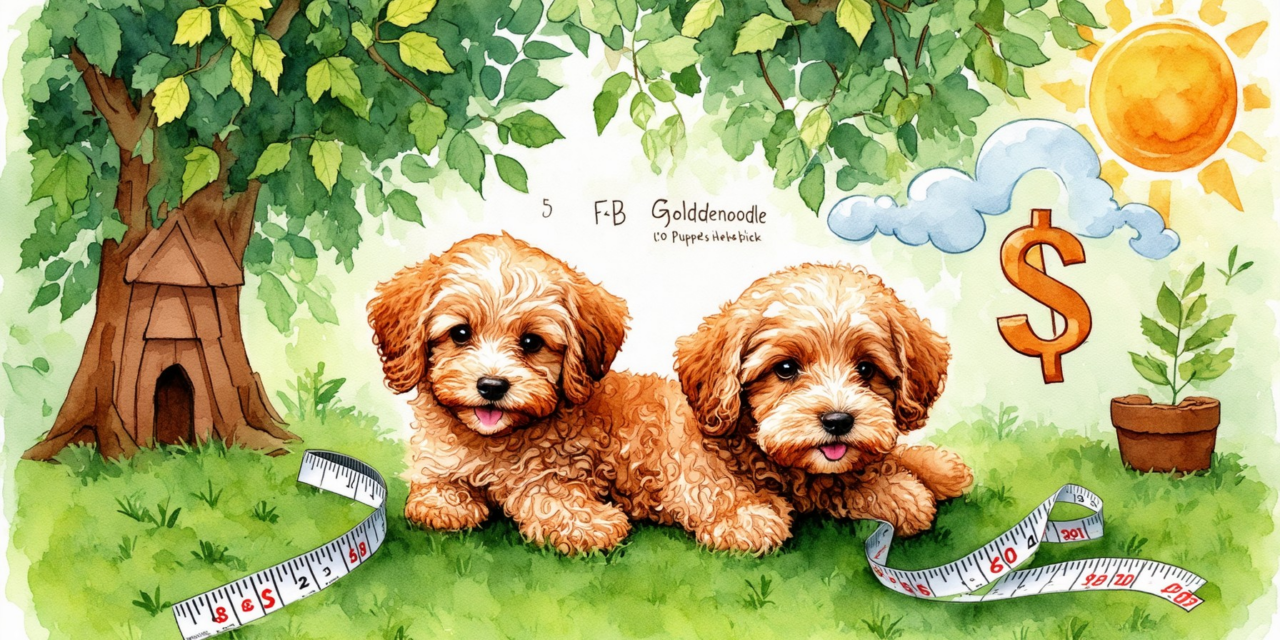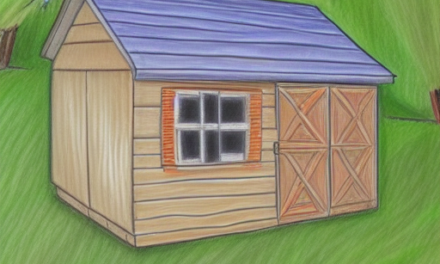Key Takeaways
- Understanding the F1B Goldendoodle: This hybrid breed is 75% Poodle and 25% Golden Retriever, known for its intelligence and friendly demeanor.
- Hypoallergenic Qualities: The F1B Goldendoodle’s curly coat makes it a better option for allergy sufferers, significantly reducing shedding and allergens.
- Size Variability: Depending on the Poodle parent, F1B Goldendoodles can range from 20 to 90 pounds, accommodating various living situations.
- Grooming Needs: Regular grooming is essential to maintain the health of their curly coats and prevent matting.
- Price Factors: F1B Goldendoodles are generally more expensive than F1s due to higher demand, breeding costs, and their desirable hypoallergenic traits.
- Choosing the Right Generation: For families with allergies, F1B Goldendoodles are often the best choice, while F1s may offer more variety in coat types and lower prices.
Welcome to our comprehensive guide on the F1B Goldendoodle, a beloved hybrid breed that combines the intelligence of the Poodle with the friendly nature of the Golden Retriever. In this article, we will delve into everything you need to know about the F1B Goldendoodle, including its unique characteristics, size variations, and curly coats. We’ll explore the differences between the F1 and F1B generations, helping you understand which might be the best fit for your lifestyle. Additionally, we’ll break down the costs associated with owning an F1B Goldendoodle, providing insights into factors that influence their price. Whether you’re curious about their lifespan, size expectations, or where to find F1B Goldendoodles for sale, this article is designed to equip you with all the essential information. Join us as we uncover the fascinating world of F1B Goldendoodles and help you make an informed decision about welcoming one into your home.
What is an F1B Goldendoodle?
The F1B Goldendoodle is a hybrid dog breed that results from crossing an F1 Goldendoodle (50% Poodle and 50% Golden Retriever) with a purebred Poodle. This genetic combination yields a dog that is approximately 75% Poodle and 25% Golden Retriever. The F1B Goldendoodle is particularly known for its hypoallergenic qualities and curly coat, making it an excellent choice for individuals with allergies.
Overview of Goldendoodle Generations
Goldendoodles come in various generations, each with distinct characteristics. The F1 generation is a direct cross between a Golden Retriever and a Poodle, resulting in a 50/50 mix. The F1B generation, as mentioned, is a cross between an F1 Goldendoodle and a purebred Poodle, leading to a higher Poodle content. Other generations include F2 (F1 Goldendoodle to F1 Goldendoodle) and F2B (F2 Goldendoodle to Poodle). Understanding these generations helps potential owners choose the right Goldendoodle for their lifestyle and preferences.
Characteristics of F1B Goldendoodles
- Coat Type: The F1B Goldendoodle typically has a wavy to curly coat, which is less likely to shed, reducing allergens in the home. This coat requires regular grooming to maintain its health and appearance.
- Temperament: These dogs are known for their friendly and intelligent nature, inheriting the best traits from both parent breeds. They are often social, eager to please, and highly trainable, making them great family pets and companions.
- Size Variations: Depending on the size of the Poodle parent (standard, miniature, or toy), F1B Goldendoodles can vary in size, typically ranging from 20 to 90 pounds.
- Health Considerations: Like all breeds, F1B Goldendoodles can be prone to certain health issues, including hip dysplasia and certain genetic conditions. Regular veterinary check-ups and a healthy diet are essential for their well-being.
- Exercise Needs: These dogs are active and require regular exercise to stay healthy and happy. Daily walks, playtime, and mental stimulation are crucial for their development.
For more detailed information on Goldendoodles and their care, consider consulting reputable sources such as the American Kennel Club or the Petfinder.

Is F1B Better Than F1?
When considering the differences between F1 and F1B Goldendoodles, it’s essential for potential owners to understand the variations in genetics, coat type, and suitability for allergy sufferers. This comparison can significantly influence your decision when choosing the right Goldendoodle for your family.
Differences Between F1 and F1B Goldendoodles
The genetic background of these two generations is a key factor in their characteristics:
- Genetic Background: The F1 Goldendoodle is a first-generation crossbreed between a Golden Retriever and a Standard Poodle. This generation typically exhibits a mix of traits from both parent breeds, resulting in a variety of coat types and temperaments. In contrast, the F1B Goldendoodle is a backcross between an F1 Goldendoodle and a Poodle, resulting in a higher percentage of Poodle genetics. This can influence both physical characteristics and behavior.
- Hypoallergenic Qualities: One of the most significant advantages of the F1B Goldendoodle is its potential for being hypoallergenic. Due to the increased Poodle lineage, F1B Goldendoodles often have a curlier coat that traps dander and allergens more effectively, making them a better choice for families with allergies or sensitivities. According to the American Kennel Club, Poodles are known for their low-shedding coats, which can be beneficial for allergy sufferers.
- Coat Types and Maintenance: F1 Goldendoodles may have a wavy or straight coat, leading to varying degrees of shedding. Regular grooming is essential to manage their coat and minimize shedding. On the other hand, F1B Goldendoodles typically have a curlier, denser coat that requires consistent grooming to prevent matting. This coat type is often easier to maintain for those concerned about allergens.
- Temperament and Behavior: Both F1 and F1B Goldendoodles are known for their friendly and intelligent nature. However, the F1B may inherit more of the Poodle’s traits, which can include higher energy levels and a greater need for mental stimulation. This makes them excellent candidates for training and activities such as agility or obedience.
Pros and Cons of Each Generation
Understanding the pros and cons of F1 and F1B Goldendoodles can help you make an informed decision:
- F1 Goldendoodle Pros:
- Variety of coat types and temperaments.
- Generally lower cost compared to F1B Goldendoodles.
- F1 Goldendoodle Cons:
- Higher likelihood of shedding.
- Less predictable coat type, which may not be suitable for allergy sufferers.
- F1B Goldendoodle Pros:
- More hypoallergenic due to increased Poodle genetics.
- Typically has a curlier coat that requires less shedding management.
- F1B Goldendoodle Cons:
- Higher price point compared to F1 Goldendoodles.
- May require more grooming due to denser coat.
Ultimately, the choice between an F1 and F1B Goldendoodle depends on your specific needs and lifestyle. For families with allergies, the F1B may be the superior choice due to its hypoallergenic qualities. However, both generations offer loving companionship and adaptability.
For more detailed information on Goldendoodle generations and their characteristics, resources such as the Goldendoodle Breed Information and the Goldendoodle Care and Training provide valuable insights.
Are F1B Goldendoodles More Expensive?
When considering the F1B Goldendoodle, one common question arises: are they more expensive than their F1 counterparts? The answer is generally yes, and several factors contribute to this price difference.
F1B Goldendoodle Cost Breakdown
F1B Goldendoodles are typically more expensive than F1 Goldendoodles due to several factors that contribute to their popularity and breeding characteristics:
- Genetic Makeup: F1B Goldendoodles are a cross between an F1 Goldendoodle (which is 50% Golden Retriever and 50% Poodle) and a purebred Poodle. This results in a dog that is approximately 25% Golden Retriever and 75% Poodle. The increased Poodle genetics often lead to a coat that is more hypoallergenic and less prone to shedding, making them desirable for families with allergies.
- Demand and Availability: The demand for F1B Goldendoodles has surged in recent years due to their appealing traits, including their friendly temperament and low-shedding coats. This high demand often results in higher prices compared to F1 Goldendoodles, which are typically more readily available.
- Breeding Costs: The costs associated with breeding F1B Goldendoodles can be higher. Responsible breeders invest in health testing for both parent breeds to ensure the puppies are healthy, which can increase the overall price of the puppies.
- Market Trends: According to various pet industry reports, the trend towards hypoallergenic breeds has led to an increase in the prices of F1B Goldendoodles. As more people seek these dogs for their family pets, the prices continue to reflect their popularity.
In summary, F1B Goldendoodles are more expensive than F1 Goldendoodles due to their genetic advantages, increased demand, higher breeding costs, and market trends favoring hypoallergenic breeds. For more detailed insights on pet ownership and care, resources like the American Kennel Club can provide valuable information.
Factors Influencing Goldendoodle Prices
Several factors can influence the Goldendoodle price, particularly for the F1B generation:
- Location: Prices can vary significantly based on geographic location. Urban areas with higher living costs may see elevated prices for F1B Goldendoodles.
- Breeder Reputation: Reputable breeders who prioritize health testing and ethical breeding practices often charge more for their puppies. This investment in quality can lead to healthier dogs with better temperaments.
- Size Variations: The size of the Goldendoodle also affects the price. For instance, mini F1B Goldendoodles may be priced differently than standard or medium sizes due to their rarity and demand.
- Coat Type: The goldendoodle hair type can influence pricing as well. Puppies with curlier, hypoallergenic coats are often more sought after, leading to higher costs.
Understanding these factors can help potential owners make informed decisions when considering the purchase of an F1B Goldendoodle. For more information on pet care and wellness, check out our Blog Category.
Do F1B Goldendoodles Get Big?
When considering an F1B Goldendoodle, one of the most common questions is about their size. F1B Goldendoodles, a popular hybrid breed, can vary significantly in size depending on their parentage. Generally, the size of an F1B Goldendoodle is influenced by whether they are bred from a Standard Poodle or a Miniature Poodle.
F1B Goldendoodle Size Variations
- Standard F1B Goldendoodles: Typically grow to be 20–24 inches tall at the shoulder and weigh between 50–90 pounds.
- Mini F1B Goldendoodles: Usually stand about 15–20 inches tall and weigh around 25–50 pounds.
Genetics play a crucial role in determining the size of an F1B Goldendoodle. The size of the Poodle parent (Standard or Miniature) directly affects the offspring’s potential size. Additionally, nutrition and overall health during the puppy stage can influence growth rates and final size. Understanding these factors is essential for prospective owners to ensure they can accommodate their new pet’s needs.
Full Grown Goldendoodle Size Expectations
As F1B Goldendoodles grow, their size can also be influenced by various health considerations. Like all breeds, F1B Goldendoodles can be prone to certain health issues, including hip dysplasia and certain genetic conditions. Regular veterinary check-ups and a balanced diet are essential for maintaining their health and optimal growth. If you’re considering an F1B Goldendoodle, it’s important to understand their potential size and care requirements. This breed is known for its friendly temperament and low-shedding coat, making them a great choice for families and individuals alike.
For more detailed information on Goldendoodle care and health, refer to reputable sources such as the American Kennel Club and Petfinder.

Are F1B Goldendoodles More Curly?
Goldendoodle Hair Types Explained
F1B Goldendoodles are indeed known for having a curlier coat compared to their F1 counterparts. This is primarily due to their genetic makeup, as F1B Goldendoodles are a cross between an F1 Goldendoodle and a purebred Poodle. The Poodle’s genetics contribute to the tighter curls and wavy textures often seen in F1B Goldendoodles.
- The F1B Goldendoodle typically exhibits a more pronounced curl pattern, which can range from loose waves to tight curls. This variation is influenced by the percentage of Poodle genes inherited.
- The curlier coat of the F1B generation is beneficial for reducing shedding, making them a suitable option for allergy sufferers. The tightly curled hair traps dander and hair, minimizing allergens in the environment.
Coat Characteristics of F1B Goldendoodles
Due to their curlier coats, F1B Goldendoodles are less likely to trigger allergies compared to other dog breeds. The Poodle lineage is known for being hypoallergenic, which is a significant advantage for families with allergy concerns. Regular grooming is essential to maintain the health of their coat:
- The curlier coat requires regular grooming to prevent matting and tangles. Owners should brush their F1B Goldendoodle at least once a week and consider professional grooming every 6 to 8 weeks.
- A well-groomed F1B Goldendoodle not only looks good but also maintains better skin health. Regular grooming helps to distribute natural oils and can prevent skin issues.
In summary, F1B Goldendoodles are generally curlier than F1 Goldendoodles, making them a popular choice for those seeking a low-shedding, hypoallergenic pet. Their unique coat characteristics not only enhance their aesthetic appeal but also contribute to a healthier living environment for allergy sufferers. For further insights on pet care and health, consider consulting reputable sources such as the American Kennel Club and veterinary health organizations.
What Generation of Goldendoodle is Best?
When considering which generation of Goldendoodle is best, it’s essential to understand the characteristics and traits associated with each generation. Here’s a breakdown of the most common Goldendoodle generations:
1. **F1 Goldendoodle**: This first generation is a direct cross between a Golden Retriever and a Poodle. They are known for hybrid vigor, which often results in better health and vitality. F1 Goldendoodles typically exhibit a mix of coat types, leading to varying degrees of shedding. Their temperament is generally friendly and intelligent, making them great family pets.
2. **F1B Goldendoodle**: Bred by crossing an F1 Goldendoodle with a Poodle, F1B Goldendoodles have a higher percentage of Poodle genetics (approximately 75% Poodle, 25% Golden Retriever). This generation is often considered more hypoallergenic, making them suitable for allergy sufferers. Their coats tend to be curlier, which can reduce shedding and require regular grooming to maintain.
3. **F2 Goldendoodle**: This generation results from breeding two F1 Goldendoodles together, resulting in a 50/50 mix of Poodle and Golden Retriever genetics. F2 Goldendoodles can be more unpredictable in terms of coat type and shedding, which may not be ideal for those seeking specific traits.
4. **Multigenerational Goldendoodles**: These dogs are bred from F1B Goldendoodles or through backcrossing with Poodles. They typically have a higher percentage of Poodle genetics, making them even more hypoallergenic. Multigenerational Goldendoodles often have consistent coat types and are favored for their reduced shedding.
5. **F2B Goldendoodle**: This generation is produced by crossing an F2 Goldendoodle with a Poodle, resulting in a variety of coat types and shedding characteristics. They may appeal to those looking for specific traits but can also be unpredictable.
6. **Allergies**: For individuals with allergies, F1B or Multigenerational Goldendoodles are often recommended due to their potential hypoallergenic traits. Research indicates that these generations may produce fewer allergens compared to F1 or F2 Goldendoodles.
7. **Coat Maintenance**: Curly coats, commonly found in F1B and Multigenerational Goldendoodles, require regular grooming to prevent matting. It’s advisable to establish a grooming routine early on to ensure coat health.
8. **Shedding**: Generally, F1B and Multigenerational Goldendoodles are considered to shed less than F1 or F2 Goldendoodles, making them a better choice for those concerned about pet hair in the home.
9. **Size**: Goldendoodles can vary significantly in size, depending on the size of the parent Poodles and Golden Retrievers. It’s crucial to research the sizes of the parents to understand the potential size of the Goldendoodle.
10. **Temperament**: Goldendoodles are renowned for their friendly and intelligent nature. However, individual personalities can vary widely, so it’s essential to spend time with the puppy or dog to ensure a good match for your family.
In conclusion, the best generation of Goldendoodle largely depends on your specific needs, such as allergy considerations, desired coat type, and temperament preferences. For those seeking a hypoallergenic option, F1B or Multigenerational Goldendoodles are often the best choices. Always consult reputable breeders and consider your lifestyle when making a decision.
Choosing the Right Goldendoodle for Your Lifestyle
When selecting a Goldendoodle, it’s important to consider your lifestyle and how a particular generation will fit into it. Here are some factors to keep in mind:
– **Activity Level**: Goldendoodles are active dogs that require regular exercise. If you lead a busy lifestyle, consider a generation that matches your energy levels. F1B Goldendoodles, with their Poodle genetics, may require more mental stimulation and physical activity.
– **Allergy Considerations**: If you or someone in your household has allergies, opting for an F1B Goldendoodle may be beneficial due to their lower shedding and hypoallergenic qualities. This can significantly improve your living environment.
– **Space Requirements**: The size of your living space can influence your choice. Standard Goldendoodles require more room to roam, while mini and F1B mini Goldendoodles can adapt well to smaller homes or apartments.
– **Grooming Commitment**: Different generations have varying grooming needs. F1B Goldendoodles often have curlier coats that require regular grooming to prevent matting. If you prefer a lower-maintenance option, consider the grooming requirements of each generation.
By evaluating these factors, you can make an informed decision that aligns with your lifestyle and ensures a happy, healthy relationship with your Goldendoodle.
F1B Goldendoodle for Sale
Where to Find F1B Goldendoodles for Sale
Finding a reputable F1B Goldendoodle for sale can be an exciting yet challenging task. Start by exploring local breeders who specialize in Goldendoodles. Websites like the American Kennel Club provide listings of registered breeders, ensuring you connect with those who adhere to ethical breeding practices. Additionally, platforms such as Petfinder and Adopt a Pet can help you locate F1B Goldendoodles in need of homes, often at a lower cost than purchasing from breeders.
When searching for F1B Goldendoodles, consider checking local classifieds or pet adoption websites like Oodle Pet Listings. These platforms often feature a variety of Goldendoodle puppies for sale, including F1B and mini Goldendoodles. Always ensure that the seller provides health clearances and a guarantee for the puppy’s well-being.
Tips for Buying a Goldendoodle Puppy
When buying an F1B Goldendoodle, there are several important factors to consider to ensure you make a well-informed decision:
1. **Research Breeders**: Look for breeders with positive reviews and a solid reputation. Ask for references and visit their facilities if possible to see the conditions in which the puppies are raised.
2. **Health Testing**: Ensure that the breeder conducts health testing on the parent dogs for common Goldendoodle health issues, such as hip dysplasia and genetic disorders. This can significantly impact the lifespan and overall health of your F1B Goldendoodle.
3. **Meet the Parents**: Meeting the puppy’s parents can give you insight into their temperament and behavior, which can be indicative of the traits your puppy may inherit.
4. **Ask About Socialization**: A well-socialized puppy is more likely to grow into a well-adjusted adult. Inquire about how the puppies are exposed to different environments, people, and other pets.
5. **Understand the Cost**: The price of F1B Goldendoodles can vary widely based on factors such as breeder reputation, location, and the puppy’s lineage. Generally, you can expect to pay anywhere from $1,500 to $3,000. Be wary of prices that seem too low, as they may indicate poor breeding practices.
By following these tips, you can find a healthy and happy F1B Goldendoodle that fits your lifestyle and family needs. For more information on Goldendoodle care and training, visit the Goldendoodle Care and Training page.













